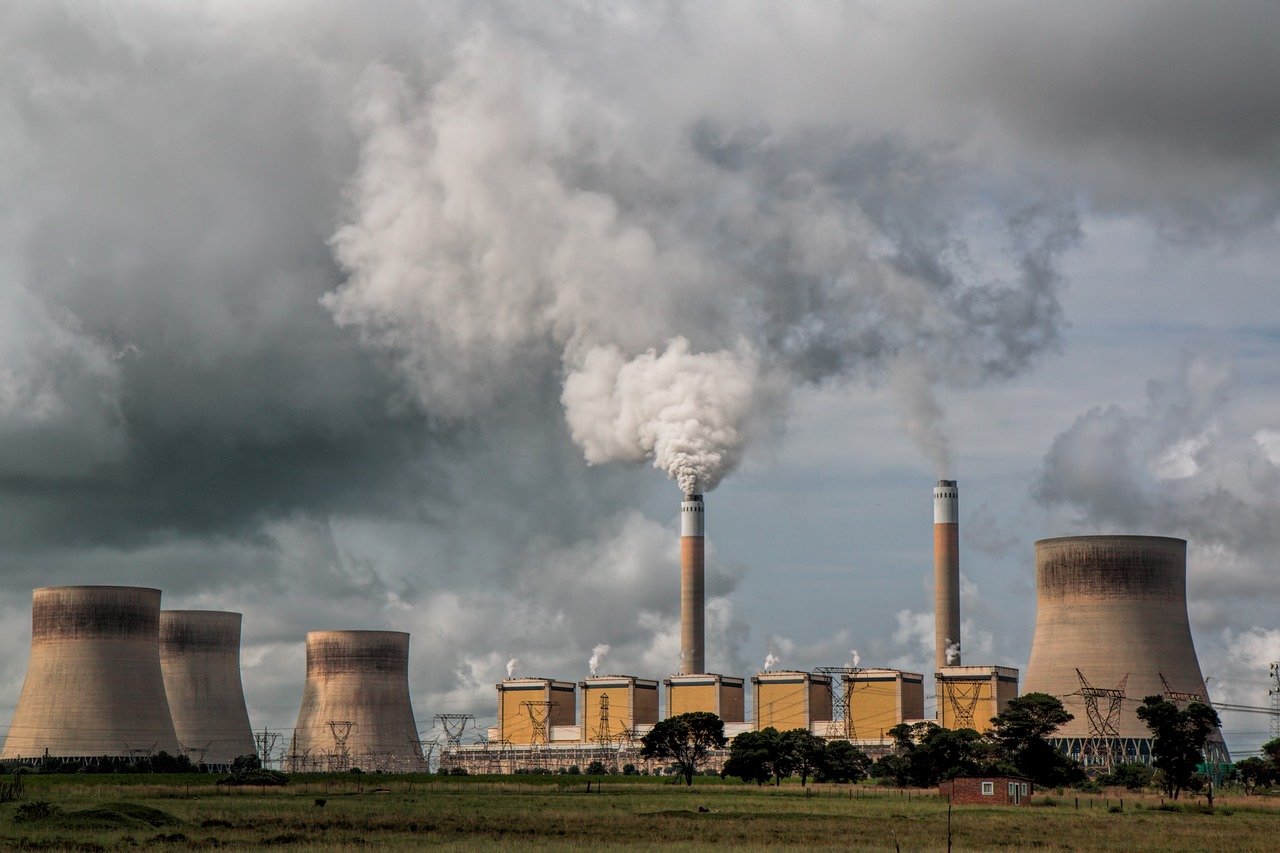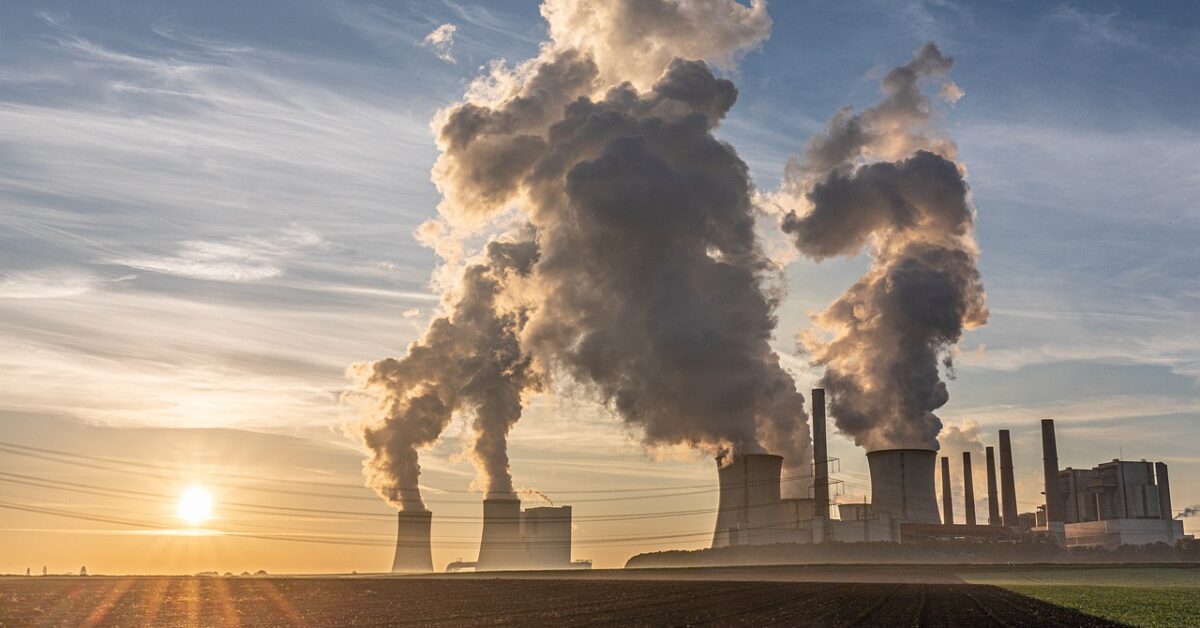The oil and gas industry has long been the backbone of the global energy supply, driving economic growth and powering modern life. As the industry continues to grow, there is an increasing need for renewable energy sources.
One such innovative technology is direct air capture (DAC), which holds the potential to mitigate the industry’s environmental impact by removing CO2 directly from the atmosphere. As we explore the implications of DAC technology within the oil and gas sector, we must consider how this innovation aligns with economic, energy security, and environmental concerns.
By examining the benefits of DAC, including its potential to create new revenue streams, foster energy independence, and promote responsible environmental stewardship, we can better understand the role it could play in the industry’s future. In this article, we will explore the ins and outs of direct air capture, including what it is, its cost and benefits, and more.
What Is Direct Air Capture?

via Pixabay
Direct Air Capture, also known as DAC, is a process that involves removing carbon dioxide from the air and converting it into a form that can be stored or used for various purposes. This technology is becoming increasingly important as we strive to reduce carbon emissions in the atmosphere.
DAC works by using special materials that are designed to capture and absorb carbon dioxide from the air. These materials are then heated to release the captured carbon dioxide, which can be stored or used for other purposes. One of the most promising applications of DAC is to use the captured carbon dioxide to produce synthetic fuels or other chemicals, which can then replace fossil fuels.
One of the advantages of DAC is that it can be used in locations where other carbon capture technologies are not feasible, such as in remote areas or on ships and airplanes. It also has the potential to be more cost-effective than other carbon capture technologies, especially as the technology continues to improve and become more efficient.
What Does the Direct Air Capture Process Look Like?
The process of direct air capture starts with the air being sucked in through a filter to remove large particles, then once the air has been cleaned, it is passed through a special material that absorbs the CO2. At its core, DAC is about capturing carbon dioxide (CO2) directly from the air and storing it securely.
This material is designed to selectively capture CO2 molecules while allowing other gases to pass through. Once the CO2 has been captured, it is separated from the material and compressed into a liquid form. This liquid CO2 is then transported to a location where it can be stored safely.
Several different DAC technologies are currently in development, each with its unique approach to capturing and storing CO2. Some systems use chemical reactions to capture CO2, while others use special membranes or advanced materials.
How Efficient Is Direct Air Capture?

via Pixabay
The efficiency of direct air capture remains a topic of debate among experts. Direct Air Capture (DAC) has been gaining traction as a potential solution to reduce atmospheric carbon dioxide emissions. The process involves capturing carbon dioxide directly from the air and storing it underground or using it for industrial purposes.
One of the main concerns with DAC is its high energy consumption. The process requires significant energy to capture carbon dioxide from the air, and the energy source used to power the process may determine its overall efficiency.
Some proponents of DAC argue that renewable energy sources like wind and solar can be used to power the process, making it more sustainable and efficient.
Another factor that affects the efficiency of DAC is the cost. Currently, the technology is expensive and may not be feasible for large-scale implementation. However, with advancements in technology and economies of scale, the cost of DAC is expected to decrease.
Regarding its potential impact on reducing carbon dioxide emissions, DAC can capture carbon dioxide directly from the air, making it a promising technology. However, its effectiveness in reducing emissions on a large scale still needs to be seen.
What Are the Benefits of Direct Air Capture?
Direct air capture (DAC) presents an array of benefits that can align with core values such as economic growth, energy independence, and responsible stewardship of the environment. By investing in DAC technology, we can create new jobs and stimulate innovation, bolstering the economy while addressing the pressing issue of renewable energy.
First and foremost, DAC offers a viable means to maintain energy security by enabling the continued use of fossil fuels more sustainably. As a complement to emissions reduction efforts, DAC can help mitigate the environmental consequences of the oil and gas industry, thus preserving a vital economic sector.
The development of DAC technology can lead to energy independence by reducing reliance on foreign oil imports. By capturing carbon emissions domestically, we can create a more stable energy market and increase national security.
Additionally, the technology has the potential to generate new revenue streams through the sale of captured carbon for use in various industries, such as agriculture, construction, and manufacturing.
What Are the Downsides of Direct Air Capture?

via Pixabay
Direct Air Capture (DAC) is a technology that has been gaining much attention lately due to its potential to capture and remove carbon dioxide (CO2) from the atmosphere. While this technology holds a lot of promise, it is also important to consider its downsides.
One of the main downsides of DAC is its cost. The technology requires a lot of energy to operate, so it is currently quite expensive to implement. This means it has yet to be a viable solution for the large-scale removal of CO2 from the atmosphere.
While DAC can help remove CO2 from the atmosphere, it does not address the root causes of our changing global environmental landscape. To truly address the changes, we need to focus on reducing our emissions and removing CO2 from the atmosphere.
Finally, there are also concerns about the environmental impact of DAC. The technology requires large amounts of land and water to operate, which could negatively affect local ecosystems. Additionally, the chemicals used in the process could harm the environment if improperly handled.
Overall, while DAC has the potential to be a useful tool, it is important to carefully consider its downsides and limitations before pursuing it as a solution.
How Much Does Direct Air Capture Cost?
Currently, the cost of DAC varies depending on the specific technology and the scale of the operation. Estimates range from $100 to $600 per square ton of CO2 removed, with some pilot projects and smaller-scale systems falling within the higher end of this spectrum. The costs will all depend on the specifications of each individual project; this is just a range.
The cost of direct air capture (DAC) has been a significant point of discussion and concern since the technology’s inception. It comes with a host of both downsides and benefits that have led to spirited debate around the topic. But at the end of the day, it’s clear that direct air capture could significantly impact our environment and prove to be a highly lucrative venture.
As an innovative solution to address the changing landscapes of the global environment by removing carbon dioxide (CO2) from the atmosphere, DAC has the potential to play a critical role in our efforts to reduce gas emissions.
However, the high costs associated with the technology’s implementation and operation have raised questions about its feasibility and practicality for large-scale deployment.
These costs encompass the capital investment required for building and maintaining the DAC infrastructure, as well as ongoing operational expenses such as energy consumption, maintenance, and labor. There is a lot that goes into DAC, but as innovations continue to develop, the technology is predicted to become less costly.
One of the primary factors contributing to the high cost of DAC is its energy-intensive nature. The process requires a significant amount of energy to capture CO2 from the air, separate it from the capture material, and compress it for storage or utilization.
The choice of energy source plays a crucial role in determining the overall cost and environmental impact of the process, with renewable energy sources offering the potential to reduce both the cost and carbon footprint of DAC systems. This is another area where continued innovation is predicted to decrease expenses.
That’s a phenomenon not unique to just DAC. As with any emerging technology, the costs associated with DAC are expected to decrease as research and development progress, and economies of scale come into play.
Technological advancements that improve the efficiency of the capture process, reduce energy requirements, and optimize the utilization of captured CO2 can all contribute to lowering costs. In addition to technological improvements, financial incentives, such as carbon pricing or government subsidies, could help offset the high costs associated with DAC implementation.
By placing a price on carbon emissions, companies may be more inclined to invest in carbon removal technologies like DAC, ultimately driving down costs as demand and competition increase. If governments or institutions choose to incentivize carbon removal technologies carbon capture and storage (CCS) or direct air capture (DAC), innovation is sure to continue.
Final Thoughts
In conclusion, direct air capture (DAC) has emerged as a potentially transformative technology with the capacity to substantially mitigate global carbon emissions, while addressing economic, energy security, and environmental concerns.
Although still in its infancy, DAC has already demonstrated promising results, attracting the attention of investors and policymakers worldwide. It is crucial, however, to recognize that DAC should not be viewed as a singular solution, but rather as a complementary measure to be employed alongside renewable energy initiatives and conservation efforts.





